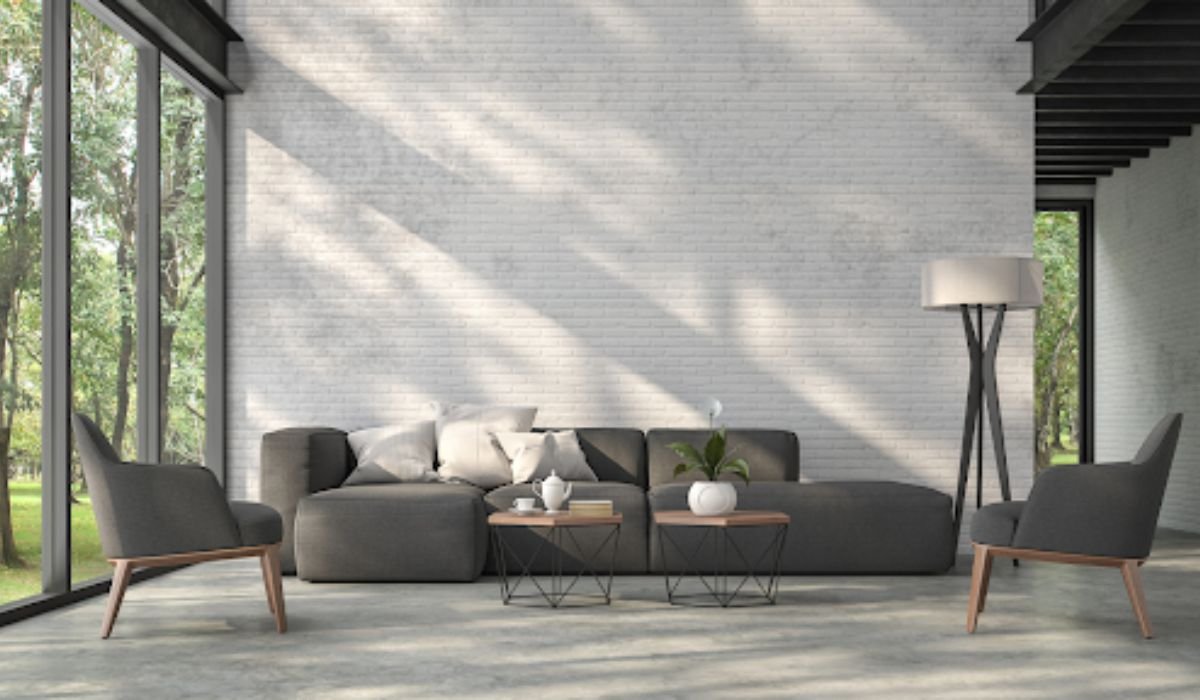Your sofa is more than just a place to sit; it’s the heart of your living room, where comfort meets style and personality. Choosing the right one can completely transform your space, setting the tone for how you relax, entertain, and unwind. From size and fabric to color and configuration, every detail plays a role in creating the perfect balance of function and aesthetic.
Think about how you use your space daily: Do you need a sectional for family movie nights, or a sleek loveseat for a smaller apartment? The key is finding a sofa that fits your lifestyle while enhancing the overall look and feel of your home. This blog breaks down everything you need to know to make a choice that’s both stylish and built to last.
Understanding Your Space Before You Fall in Love With Any Sofa
Measurements are absolutely critical. You need to understand your room’s bones before you even think about aesthetics or comfort levels. Grab your tape measure and start documenting wall lengths, ceiling height, and every doorway that opens into your living area. Here’s what people forget: hallways, stairwells, and tight corners where delivery crews will curse under their breath trying to navigate your new purchase.
There’s an old design rule: the 2/3 principle that suggests your sofa should take up roughly two-thirds of your wall’s length for visual balance that doesn’t look awkward. Always tack on an extra six inches when you’re calculating clearances. This breathing room saves your walls from scuffs and your furniture from dings when everything’s getting positioned.
Sofa Styles That’ll Actually Work in Your Space
Choosing the right sofa means matching form to function. Your lifestyle dictates what works, not just what looks cool on Pinterest.
Modern Styles for Contemporary Homes
Mid-century modern pieces hit that sweet spot between retro nostalgia and current appeal with their tapered legs and streamlined silhouettes. Sectionals give you modular flexibility when your family grows or you host parties regularly.
Stores offering living room couches for sale typically stock tuxedo sofas; those designs where arms and backs sit at identical heights, creating clean profiles that work brilliantly in compact spaces.
Track-arm sofas embrace minimalist philosophy with their straight, no-nonsense arms. Bridgewater styles go relaxed with skirted designs that completely hide the legs underneath.
Timeless Designs That Never Look Dated
Chesterfield sofas pack that button-tufted punch perfect for spaces with formal vibes. Lawson sofas bring casual energy with tight backs and unfussy lines. These traditional sofa styles and designs stick around decade after decade because they play nice with evolving décor trends instead of fighting them.
English rolled arms deliver sophistication without trying too hard. Camelback profiles feature those elegant arched backs that traditional homes absolutely eat up.
Smart Solutions When Space Is Tight
Apartment-size sofas clock in around 72-80 inches, fitting snugly in rooms where every square foot counts. Loveseats and settees provide legitimate seating without dominating your floor space. Wall-hugger recliners let you kick back without needing a football field of clearance behind them.
Armless designs create visual openness that tricks the eye into seeing more room. Sofa beds pull double duty for overnight guests without demanding a dedicated guest bedroom.
What Makes a Sofa Last Versus Fall Apart
The stuff hidden under your upholstery decides whether you’re sitting pretty for fifteen years or dealing with sagging cushions before you’ve even paid off the credit card. Let’s get into construction details that actually matter.
Frame Quality Separates Winners from Losers
Kiln-dried hardwood frames built from oak, maple, or beech typically deliver 15+ years of service with reasonable care. Plywood hits that middle ground of decent durability without premium pricing. Stay away from particle board and MDF construction—those materials can’t handle daily family life, especially when kids are using your sofa as a trampoline.
Corner blocking and reinforced joints keep everything stable over time. Metal frames work for contemporary aesthetics but sometimes lack the substantial feel that solid wood provides.
Cushion Fill Options and What They Mean for Comfort
High-density foam with ratings of 2.0 or higher keeps its shape through countless movie marathons and lazy Sundays. Down and feather fills feel luxurious but demand regular fluffing maintenance. Hybrid systems that wrap foam cores with down strike a nice balance between structure and softness.
Memory foam and gel-infused varieties offer pressure relief that certain people swear by. Spring-down combos deliver firm support for folks who want serious structure without sacrificing plushness.
Fabric Selection: More Important Than You Realize
Your fabric choice directly impacts how much cleaning you’ll do, how long things last, and how comfortable daily use feels. Different materials suit different realities.
Performance Fabrics for Real Life
Crypton and Sunbrella performance textiles fight off stains and moisture like absolute champions. Microfiber and microsuede handle 30,000+ double rubs while naturally repelling pet hair. These synthetic blends are lifesavers for pet owners where “accidents” are just part of the deal.
Removable, washable slipcovers let you switch up your aesthetic seasonally. They’re practical gold for families with small children who haven’t quite nailed the concept of eating over their plates.
Leather Varieties and Their Quirks
Full-grain leather ages gorgeously and develops unique character as years pass. Top-grain leather offers a more consistent appearance with polished finishing. Bonded leather comes cheaper but won’t give you anywhere near the longevity of genuine alternatives.
Faux leather and vegan options address ethical concerns without sacrificing visual appeal. Your climate affects maintenance needs—humid environments require less conditioning than arid regions, where leather dries out faster.
Where to Buy: Online Versus Physical Stores
Your buying channel matters almost as much as what you’re actually purchasing. Each approach brings distinct advantages worth weighing carefully.
Why Showrooms Still Matter
Nothing replaces physically testing comfort levels in person. You can examine fabric samples under different lighting and get immediate answers from knowledgeable staff. Local retailers frequently provide faster delivery windows that online companies simply can’t match.
Interestingly, nine out of ten buyers kick off their research online even when they ultimately plan showroom visits. This hybrid strategy lets you do deep homework before testing your top contenders in real life.
The Direct-to-Consumer Online Advantage
Lower overhead expenses mean those savings get passed to you on equivalent quality. Many direct-to-consumer brands offer trial periods spanning anywhere from 30 days to a full year. Virtual room visualization tech helps you preview how pieces will actually look in your specific space.
Customer reviews deliver brutally honest feedback you won’t get from any showroom salesperson. Augmented reality apps now let you drop virtual sofas into your actual room through your phone’s camera, pretty rough.
Wrapping This Up: Your Sofa Deserves Serious Thought
Finding your perfect sofa means blending practical measurements, personal style, construction quality, and lifestyle requirements into one smart decision. Don’t rush this; your sofa becomes the anchor of your living room and impacts your daily comfort for years to come.
Test everything thoroughly, compare offerings across multiple retailers, and prioritize lasting value over trendy designs that might feel stale in eighteen months.
Choosing the right sofa isn’t just another piece of furniture. It’s where life unfolds, movie nights, Sunday morning coffee, heart-to-heart conversations, and everything in between. Take your time with this decision and trust your gut when something clicks just right.
Your Burning Sofa Questions Answered
Q: What is the best month to buy a sofa?
President’s Day, Memorial Day, Labor Day, and Black Friday consistently deliver the steepest discounts. End-of-season clearance events in January and July offer killer deals as retailers clear inventory for incoming collections.
Q: How long should a quality sofa last?
Budget options might give you 3-5 years. Mid-range sofas typically hold up for 7-10 years. Premium pieces featuring hardwood frames and quality construction should serve you beautifully for 15+ years with proper maintenance and normal use.
Q: What does “double rub count” mean for sofa fabrics?
Double rub testing measures durability by simulating wear through repeated friction cycles. Residential sofas should hit at least 15,000 double rubs minimum, while commercial-grade fabrics exceed 30,000 for high-traffic situations demanding exceptional toughness.
YOU MAY ALSO LIKE: Guide to Finding the Best China Sofa Manufacturer for Custom Contract Furniture

